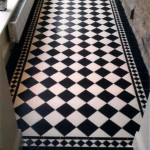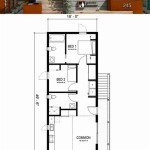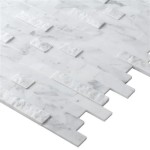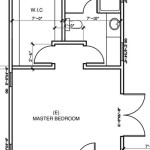The Comprehensive Guide to Understanding the Cost of New Flooring Installation
Installing new flooring can dramatically transform the aesthetic and functionality of a home or business space. However, understanding the numerous factors that influence the overall cost is crucial for budgeting and making informed decisions. This article provides a detailed exploration of the cost considerations associated with flooring installation, encompassing material expenses, labor charges, preparation requirements, and potential unforeseen costs.
The cost of new flooring installation is not a static figure. It varies considerably based on several interconnected elements. These include the type of flooring material selected, the size and complexity of the installation area, the condition of the existing subfloor, and the prevailing labor rates in the specific geographic location. A thorough understanding of these variables is essential for accurate estimation.
Key Point 1: Flooring Material Costs – A Breakdown
The choice of flooring material is the single most significant factor impacting the overall cost. Different materials command vastly different price points, reflecting variations in raw material expenses, manufacturing processes, durability, and aesthetic appeal.
Carpet: Carpet is generally considered one of the more affordable flooring options. The cost per square foot typically ranges from $2 to $8 for the material itself. Lower-end carpets may be constructed from less durable fibers, while higher-end options feature stain resistance, enhanced cushioning, and premium materials like wool or specialty synthetics. Installation costs for carpet are generally lower compared to other options, typically ranging from $1 to $3 per square foot. This makes the total installed cost range typically from $3 to $11 per square foot.
Vinyl Flooring: Vinyl flooring encompasses a broad spectrum of options, including sheet vinyl, vinyl tiles, and luxury vinyl plank (LVP). Sheet vinyl is typically the most economical, costing between $1 and $5 per square foot. Vinyl tiles range from $2 to $7 per square foot, while LVP, known for its durability and realistic wood or stone appearance, generally costs between $3 and $10 per square foot. Installation costs for vinyl flooring vary, but generally fall between $1 and $5 per square foot depending on the type of vinyl and the complexity of the installation.
Laminate Flooring: Laminate flooring offers a cost-effective alternative to hardwood. It's typically priced between $2 and $8 per square foot for the materials. Installation costs are usually in the $2 to $5 per square foot range, making the total installed cost generally between $4 and $13 per square foot.
Hardwood Flooring: Hardwood flooring is a premium option, and its cost reflects this. Solid hardwood typically ranges from $5 to $15 per square foot for the material. Engineered hardwood, which is more resistant to moisture and temperature fluctuations, generally costs between $4 and $12 per square foot. Installation costs for hardwood are generally higher, ranging from $4 to $10 per square foot due to the precision required for proper installation.
Tile Flooring: Tile flooring, including ceramic, porcelain, and natural stone, offers exceptional durability and aesthetic versatility. Ceramic tiles are typically the most affordable, ranging from $2 to $8 per square foot. Porcelain tiles, known for their density and water resistance, generally cost between $3 and $15 per square foot. Natural stone tiles, such as granite, marble, and slate, are the most expensive, ranging from $5 to $50+ per square foot. Installation costs for tile flooring are commonly higher due to the materials and skill required, typically ranging from $5 to $15 per square foot.
Other Flooring Options: Beyond these common types, other options exist, including bamboo, cork, epoxy, and concrete. Bamboo and cork flooring typically fall within the $4 to $12 per square foot range for materials. Epoxy flooring, often used in garages and commercial spaces, can range from $3 to $12 per square foot. Polished concrete, which involves grinding and sealing existing concrete slabs, has highly variable costs. These materials have varying installation costs depending on the complexity of the project.
These pricing estimates are for material costs only. It's imperative to factor in the installation costs to determine the total cost per square foot. Furthermore, regional price variations can significantly affect these figures.
Key Point 2: Labor Costs and Installation Complexity
Labor costs constitute a significant portion of the overall flooring installation budget. These costs are influenced by several factors, including the complexity of the installation, the experience and expertise of the installer, and the prevailing labor rates in the geographic region. Additionally, certain types of flooring require specialized tools and techniques, which can further increase labor costs.
Factors Influencing Labor Costs: The installation of complex patterns, such as herringbone or intricate tile mosaics, demands more time and skill, resulting in higher labor charges. Rooms with irregular shapes or numerous corners also increase the complexity of the installation, thereby impacting labor costs. The preparation of the subfloor, which may involve leveling, patching, or repairing damage, adds to the labor time and expense. Removal and disposal of existing flooring can also add to labor costs, especially if the old flooring requires specialized removal techniques.
Professional vs. DIY Installation: While DIY flooring installation may seem appealing as a cost-saving measure, it's crucial to consider the potential risks and challenges. Incorrect installation can lead to a variety of problems, including uneven surfaces, gaps, squeaks, and premature wear and tear. Repairing these issues can ultimately be more expensive than hiring a professional installer in the first instance. Furthermore, warranty coverage may be voided if the flooring is not installed according to the manufacturer's specifications.
Geographic Location: Labor rates for flooring installation vary significantly across different geographic locations. Metropolitan areas with higher costs of living typically have higher labor charges compared to rural areas. Obtaining multiple quotes from local flooring contractors will allow for an accurate assessment of prevailing labor rates in the specific area.
Hidden Installation Costs: Some professional flooring contractors will include in their estimates the cost to move furniture, or remove old flooring, but many do not. It is important to get clear definitions of what the estimate includes, so there are no surprises when the bill comes. These items will add additional costs to projects.
Key Point 3: Subfloor Preparation and Potential Remediation
The condition of the subfloor beneath the existing flooring is a critical determinant of the overall installation cost. A stable, level, and clean subfloor is essential for ensuring the longevity and performance of the new flooring. Inadequate subfloor preparation can lead to a variety of problems, including uneven surfaces, squeaks, loose tiles, and premature wear and tear. Subfloor preparation may involve leveling, patching, cleaning, or even complete replacement of damaged sections. Any one of these steps will increase overall costs.
Inspection and Assessment: A thorough inspection of the subfloor is crucial before commencing the installation. This inspection should identify any signs of damage, such as cracks, holes, moisture, or unevenness. Moisture levels in the subfloor should be checked to prevent issues such as mold growth and warping. If moisture is present, remediation may be required.
Leveling and Patching: Uneven subfloors can be addressed by leveling compounds or self-leveling underlayments. These materials create a smooth, even surface for the new flooring to be installed upon. Patching compounds can be used to fill in cracks, holes, and other imperfections in the subfloor. The cost of leveling and patching depends on the extent of the damage and the type of materials used.
Subfloor Replacement: In cases of severe damage, such as rot, warping, or extensive cracking, the subfloor may need to be completely replaced. This is a more expensive undertaking, but it ensures a solid foundation for the new flooring. The cost of subfloor replacement includes the removal of the existing subfloor, the purchase of new subfloor materials, and the labor required for installation. Commonly, these materials include plywood or concrete.
Moisture Barriers and Underlayments: Installing a moisture barrier is crucial, especially in basements or areas prone to moisture exposure. This barrier prevents moisture from seeping into the flooring and causing damage. Underlayments provide cushioning, reduce noise transmission, and improve the overall comfort of the flooring. The cost of moisture barriers and underlayments varies depending on the type of material used and the size of the area covered.
Dealing with Asbestos: If the existing flooring or subfloor contains asbestos, professional abatement is required before any new flooring can be installed. Asbestos removal is a specialized process that must be performed by certified professionals to ensure safety and compliance with environmental regulations. The cost of asbestos abatement can be substantial, depending on the amount of asbestos present and the complexity of the removal process.
Unexpected Costs: One of the most common mistakes when planning a new floor installation is to not fully account for unforeseen problems. It is not unusual to open up a floor and find issues with plumbing, electrical wiring, or insect damage that require remediation before the new floor can be installed. It is wise to build a cost buffer into the overall budget to account for these sorts of situations.
Accurately estimating the cost of new flooring installation involves considering numerous interconnected elements. By understanding the factors that influence material expenses, labor charges, preparation requirements, and potential unforeseen costs, homeowners can make informed decisions and effectively manage their flooring projects.

Floor Replacement Cost To Refloor A House Fixr

How Much Does Flooring Installation Cost 2025

Floor Replacement Cost To Refloor A House Fixr

Flooring Installation Cost Guide 2025 Average Prices By Type

Flooring Installation Cost Guide 2025 Average Prices By Type

Tile Flooring Installation Cost Floor Prices Fixr

How Much Does Flooring Installation Cost 2025

Cost To Install Hardwood Flooring Floor Fixr

The Cost To Install Laminate Flooring In 2025 Nerdwallet

Cost To Install Vinyl Flooring Fixr







